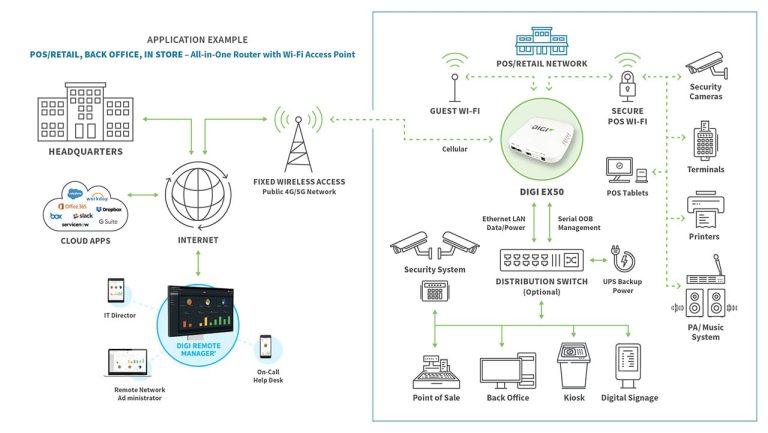WLAN-Wireless Local Area Network: Definition and Importance
1. Introduction
A Wireless Local Area Network (WLAN) is the invisible fabric that lets laptops, smartphones, tablets, and IoT devices communicate without a tangle of cables. Since its commercial debut in the late 1990s, WLAN technology—popularly branded as Wi-Fi—has transformed workplaces, homes, and public spaces into always-on, always-connected environments.
2. What Exactly Is a WLAN?
A WLAN is a network that links two or more devices over short to medium distances using radio waves (typically in the 2.4 GHz and 5 GHz bands, with 6 GHz emerging). Unlike a traditional wired LAN, where Ethernet cables do the job, a WLAN relies on:
| Component | Purpose |
|---|---|
| Wireless Access Points (APs) | Convert wired Ethernet signals to radio signals and vice versa. |
| Wireless Network Adapters | Give end devices a radio interface to send/receive data. |
| Controller or Cloud Management | (Optional) Centralizes configuration, security, and monitoring for many APs. |
The governing specifications are defined by the IEEE 802.11 family of standards (e.g., 802.11n, 802.11ac, 802.11ax/Wi-Fi 6, and 802.11be/Wi-Fi 7).
3. How Does a WLAN Work?
- Beaconing: An AP continuously broadcasts beacon frames announcing the network’s Service Set Identifier (SSID) and supported data rates.
- Association: A client device scans for SSIDs, picks one, authenticates, and associates with the AP.
- Data Exchange: Once associated, data moves between the client and AP using carrier-sense multiple access with collision avoidance (CSMA/CA) to minimize interference.
- Roaming: In multi-AP environments, clients seamlessly switch (roam) to the AP with the strongest signal, preserving sessions such as video calls.
4. Evolution of WLAN Standards
| Generation | IEEE Spec | Max Theoretical Speed* | Key Upgrade |
|---|---|---|---|
| Wi-Fi 4 | 802.11n | 600 Mbps | MIMO antennas |
| Wi-Fi 5 | 802.11ac | 6.9 Gbps | 5 GHz focus, wider channels |
| Wi-Fi 6 | 802.11ax | 9.6 Gbps | OFDMA, target wake time |
| Wi-Fi 6E | 802.11ax in 6 GHz | Similar | 1.2 GHz of new spectrum |
| Wi-Fi 7 | 802.11be | 46 Gbps | 320 MHz channels, 4K-QAM |
*Real-world speeds are lower due to protocol overhead and environment.
5. Why Is WLAN Important?
- Mobility & Flexibility
Employees can move freely within an office campus while staying connected, boosting collaboration and reducing downtime. - Cost Efficiency
Deploying fewer cables cuts installation time and maintenance costs, especially in retrofitting older buildings or temporary venues. - Scalability
Adding new users is as simple as providing credentials; no new cable pulls are required. - Ubiquitous Internet Access
Home users stream 4K video, play cloud-based games, and manage smart-home devices simultaneously over a single WLAN. - Enabling IoT & Industry 4.0
Sensors on factory floors, medical wearables in hospitals, and point-of-sale tablets in retail all depend on reliable WLAN connectivity. - Business Continuity & Guest Services
Retailers and hospitality providers use guest Wi-Fi to collect analytics, improve customer experience, and deliver real-time promotions.
6. Security Considerations
Because radio waves propagate beyond walls, security is paramount. Best practices include:
- WPA3 Encryption: Stronger protection than WPA2, thwarting offline dictionary attacks.
- 802.1X Authentication: Uses RADIUS servers to enforce per-user credentials and certificates.
- Network Segmentation: Separate corporate, guest, and IoT traffic with virtual LANs (VLANs) and firewalls.
- Regular Firmware Updates: Patch vulnerabilities in APs and clients.
- RF Planning & Monitoring: Limit signal bleed and detect rogue devices quickly.
7. Future Outlook
Technologies such as Wi-Fi 7 and Wi-Fi HaLow (802.11ah) promise higher throughput, lower latency, and long-range, low-power links. Meanwhile, convergence with 5G through concepts like Open Roaming could create seamless hand-offs between cellular and Wi-Fi networks.
8. Conclusion
A WLAN is more than just “wireless Internet.” It is a strategic asset that underpins digital transformation, remote work, immersive entertainment, and the vast ecosystem of connected devices. Understanding its fundamentals and importance equips organizations and individuals to design, secure, and leverage wireless networks effectively—now and into the hyper-connected future.







